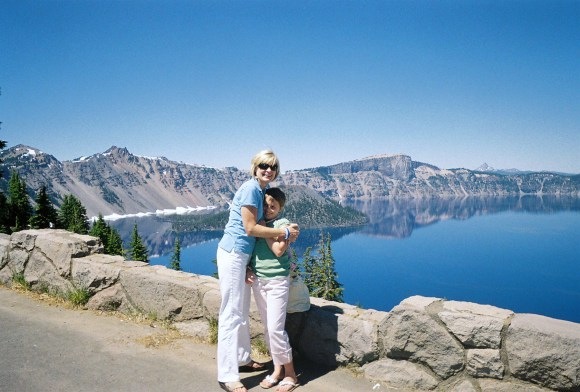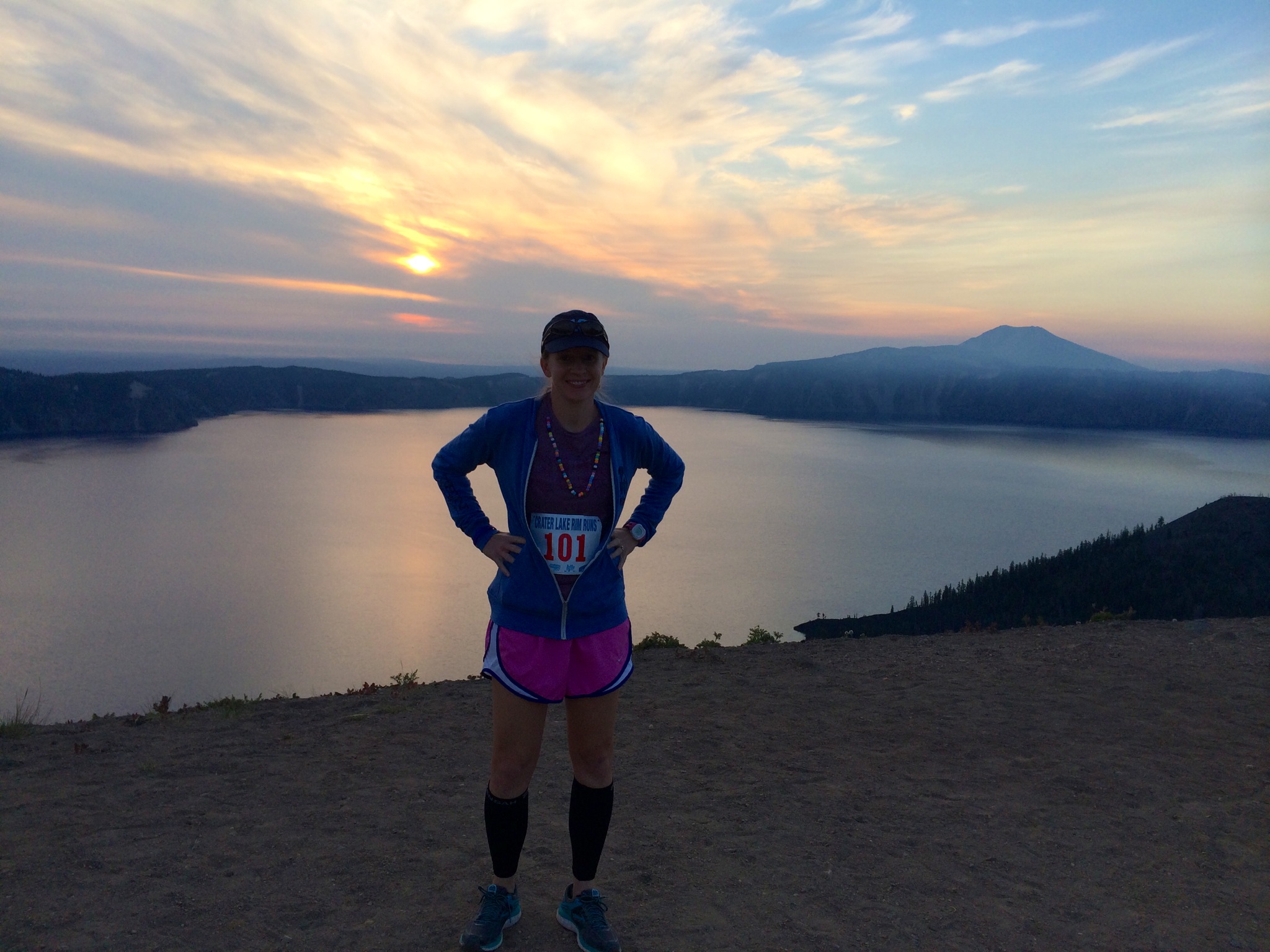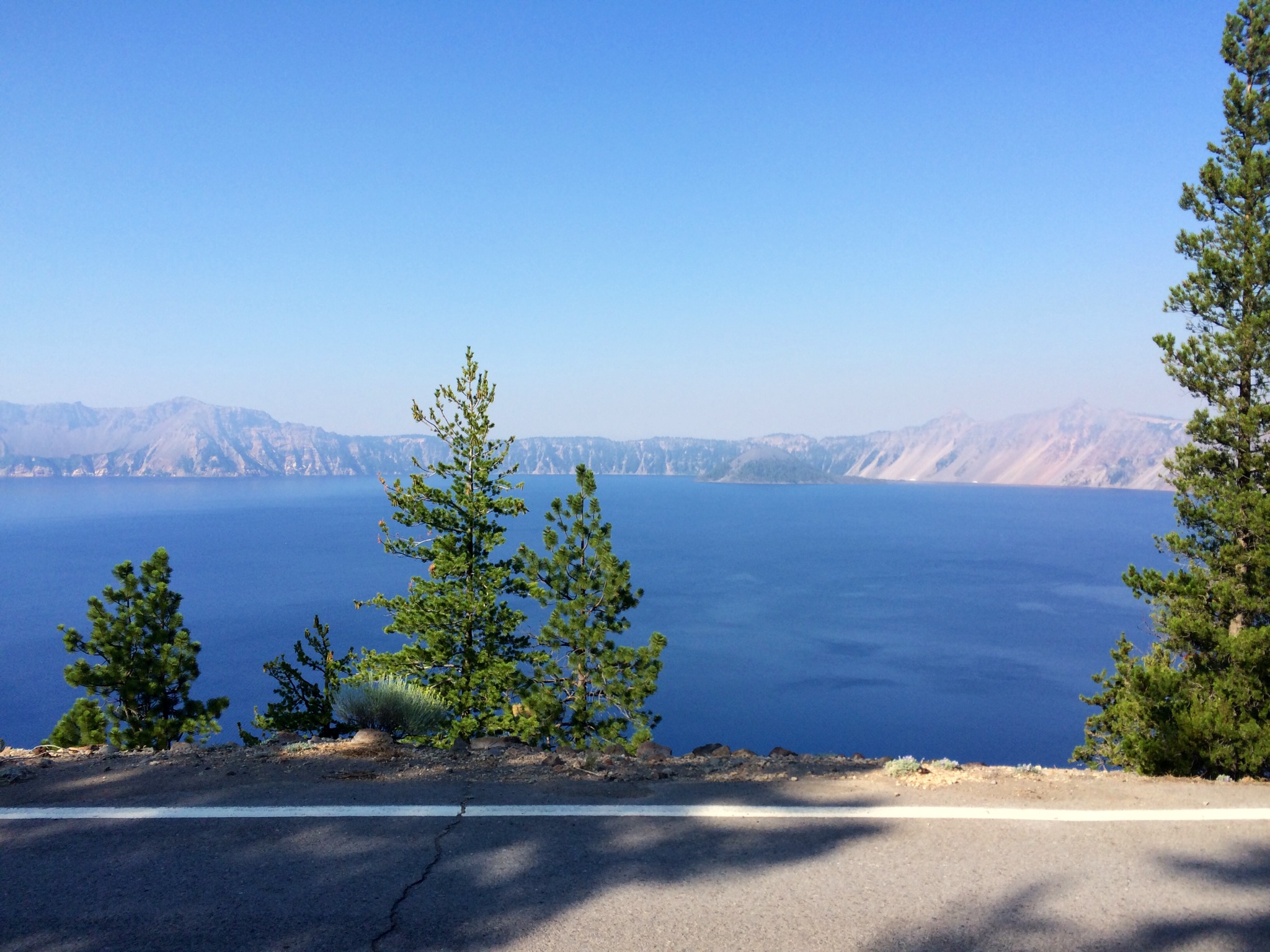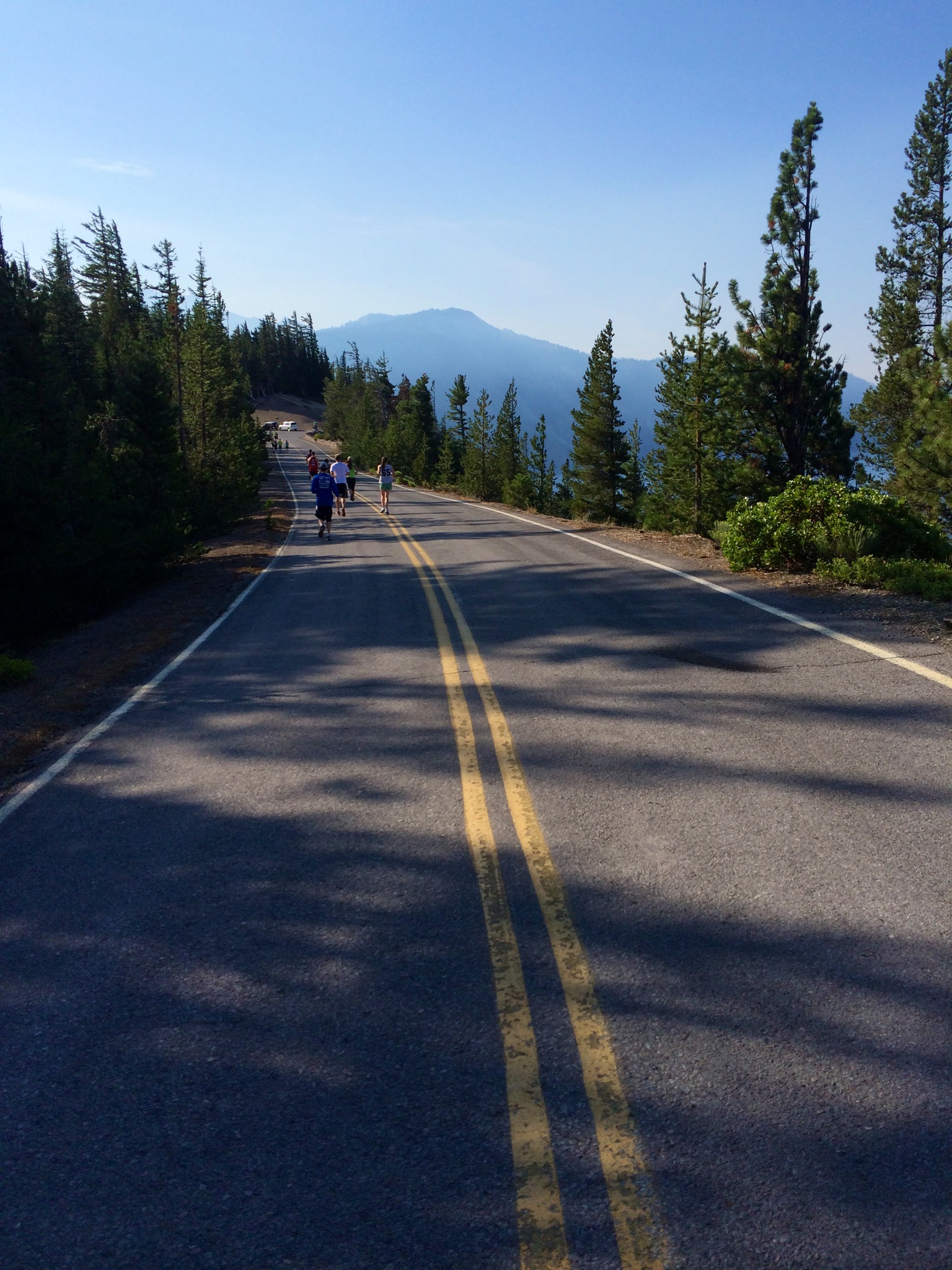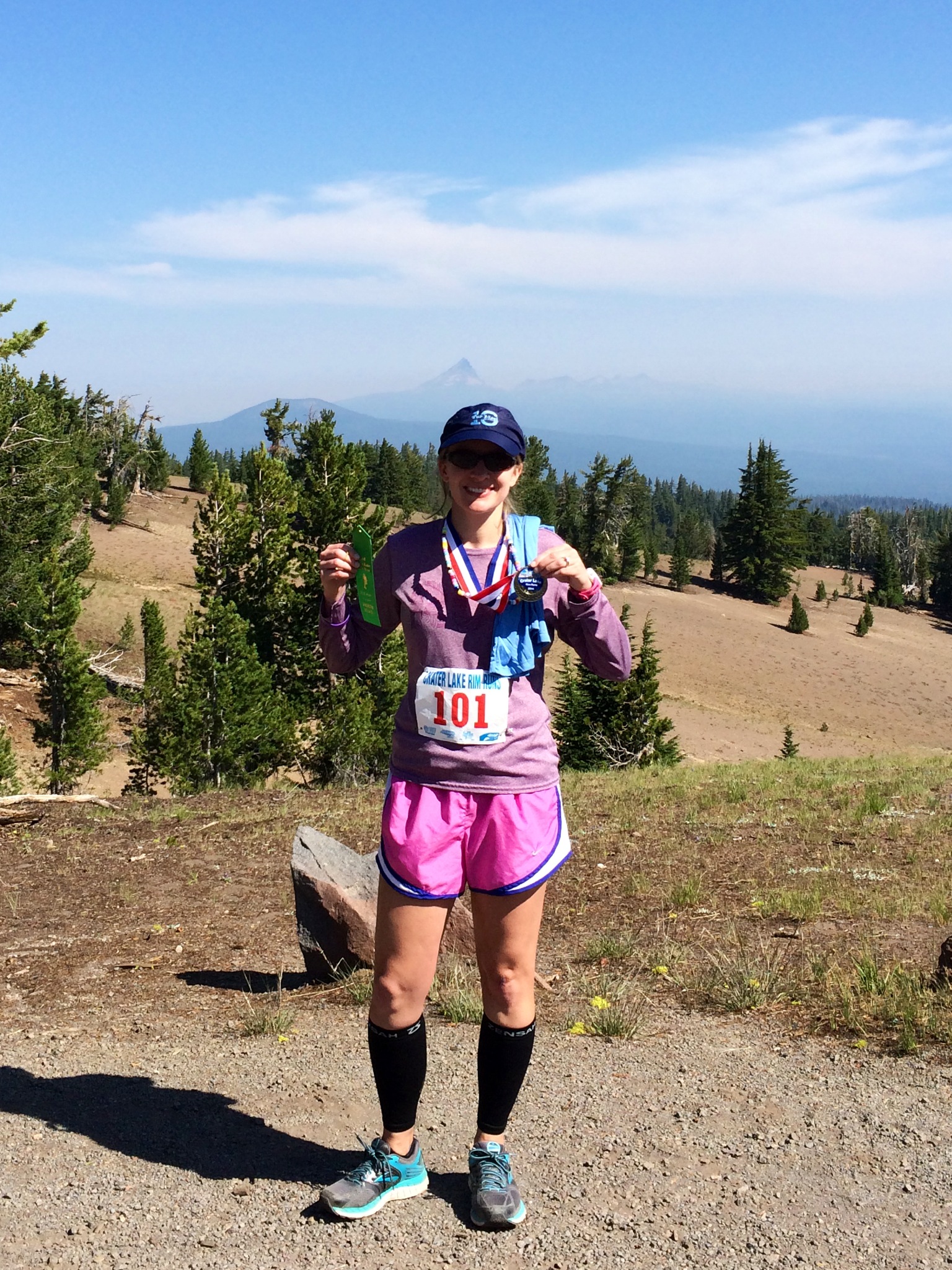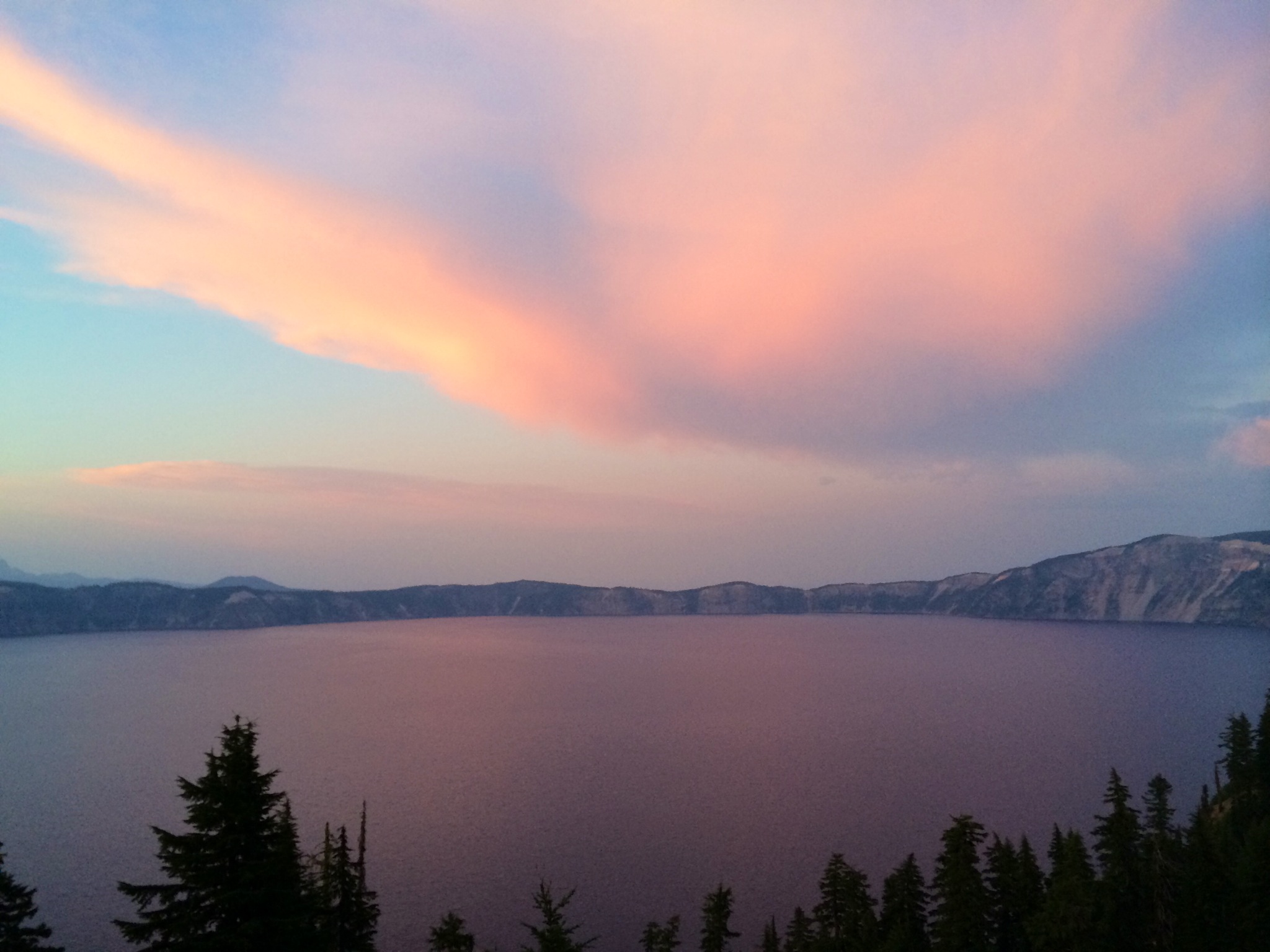When I crossed the finish line of Charlotte’s Thunder Road Half Marathon blindfolded last fall, I knew the race would be a tough act to follow. But I didn’t intend to stop running for my sister, Taylor, and our fight against Batten disease and other rare diseases.
On National Running Day, I shared my plan to run a race in all 50 states – a feat not as rare as running 13.1 miles blind but one that I hope will help me spread our story far and wide.
I needed a place to begin.
On Saturday, I kicked off my quest in the only state that ever entered my mind:
Oregon.
In January 2008, Taylor helped give millions hope when she took part in a six-patient, phase one clinical trial in Oregon. The stem cells injected into her brain didn’t save her, but the lessons she shared will help save people suffering from other diseases one day. I started running for my sister because of her courage 1) in the operating room that cold January day and 2) on the 5K race course 11 months later.
Oregon’s Crater Lake, one of our country’s pristine natural wonders, sits about 6,100 feet above sea level. For 38 years, runners have gone to Crater Lake National Park for the Crater Lake Rim Runs, which circle the lake at altitudes of up to 7,850 feet and include breathtaking – literally – elevation gains and losses of up to 1,000 feet at a time.
My parents and Taylor found solace at Crater Lake during Taylor’s time in the trial; of course, my sister couldn’t see the otherworldly blue of the lake’s snowmelt water since Batten disease stole her vision, but then again, Taylor has always found beauty in unexpected ways.
I registered for the 13-mile rim run in January, almost six years to the day after Taylor’s historic surgery.
This past Saturday, August 9, I felt anxious as I stood on a ridge in the park and watched the sun rise over the lake, wondering if a few months of hill training in my hometown of Charlotte (and one morning in the North Carolina mountains) had been enough. I felt the plastic beads on the wire necklace around my neck, a gift from my sister; she and the hospital’s child life specialist made it days after her surgery in Oregon.
When I climbed the first hill of the race, my soul came spilling out on the steeply banked national park road beneath my feet, my tears hot in the chilly air. I cried behind my sunglasses in a sea of people, but I pumped my legs and arms, and I nailed the hill.
The lake changed colors as the sun climbed higher in the sky. I found myself stopping to take photos, wanting to remember certain moments and not trusting my mind, racing with emotion, to capture everything.
Around mile seven, I faced the steepest hill yet. My lungs gasped for thin air, and my leg muscles burned. My competitive nature fought the urge to walk until I realized everyone was walking. I let myself walk for one-tenth of a mile.
It wouldn’t be the last time. The 13-mile race’s most punishing hills are in the last three miles. When my body screamed for mercy, I felt Taylor’s beads against my heart. I walked as fast as my legs would go. When I could run, I ran like hell.
The final three miles of the 13-mile course are the toughest. As I began the ascent to Mt. Scott, the highest peak in the park, I passed a runner on my left; his kind eyes and genuine smile gave me another push, and as I ran by, he said, “Great job.” I ran the final quarter-mile for a 2:14 finish – 27 minutes off my personal record for the half marathon but good for fourth place in my division on Crater Lake’s punishing course.
When we watched the surgical team wheel my sister back to the operating room on that cold day in Portland in 2008, we didn’t know what would happen. Maybe it was crazy to send a kid at a less advanced disease stage through such a harrowing surgery with no promises.
But that trial was about believing – about having faith in a better future and knowing it gave us a better shot than if we did nothing.
That’s what these runs are about, too. That’s why I started in Oregon. I know running a race won’t save my sister. Who am I kidding? I can’t save a life with a fourth place or even a first place finish, and I don’t have a PhD or a miracle drug or a magic wand.
But sometimes, we have to let go and realize we don’t have control over everything. We have to have faith. When we believe, and when we’re willing to work for what we believe in, good things can happen.
John and I took a boat out to Wizard Island on the lake on Sunday. While there, we met a woman from Oklahoma who ran the full marathon on Saturday. She saw my Taylor’s Tale wristband and recognized the name because she saw John’s shirt during the race. She lost her son to a brain disease. We had a wonderful conversation in the Oregon sunshine. Below the island’s volcanic rim, we met a nice couple from Beaverton who took our picture. She is a nurse at OHSU in Portland, where Taylor had her surgery. In the time it took to snap a few photos, two more people learned about Batten disease.
Just as it took hundreds or even thousands of years to fill Crater Lake, once a massive volcano that erupted and collapsed into the earth, it may take a thousand small steps to get to the finish line of this fight – to build a better future for people like Taylor. But when we do, like the blue of the water that fills one of the purest lakes in the world, it will be more beautiful than you or I can describe.

